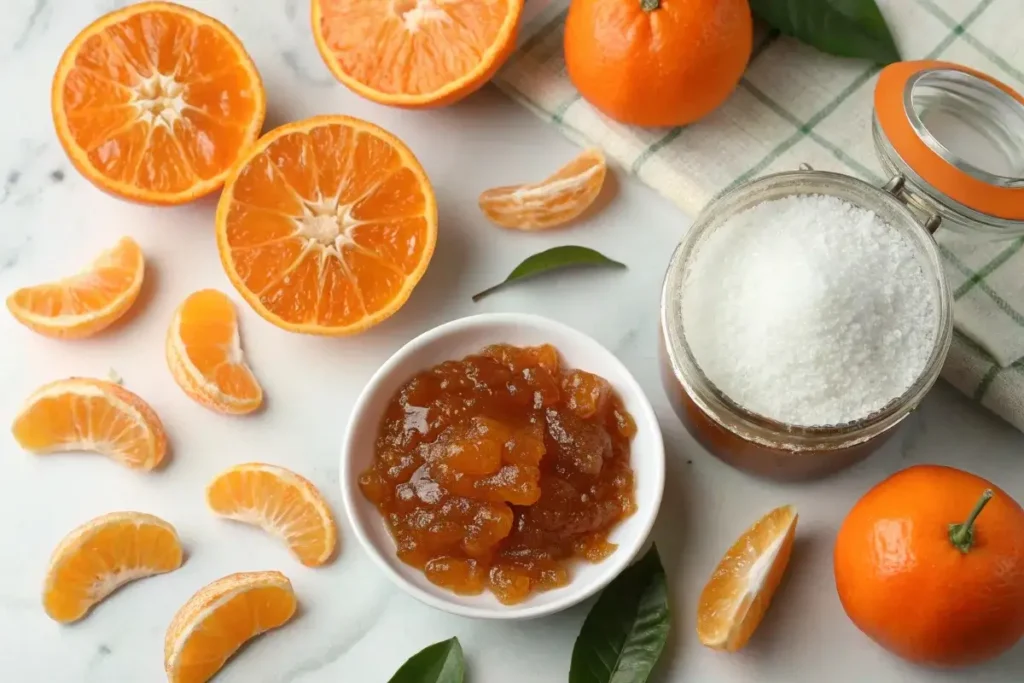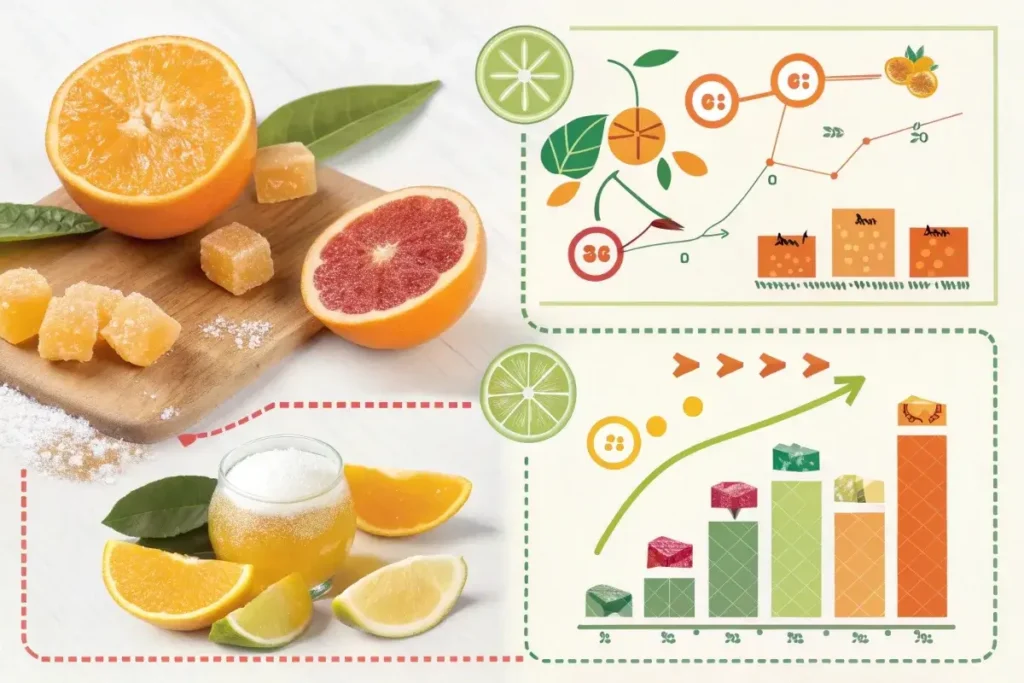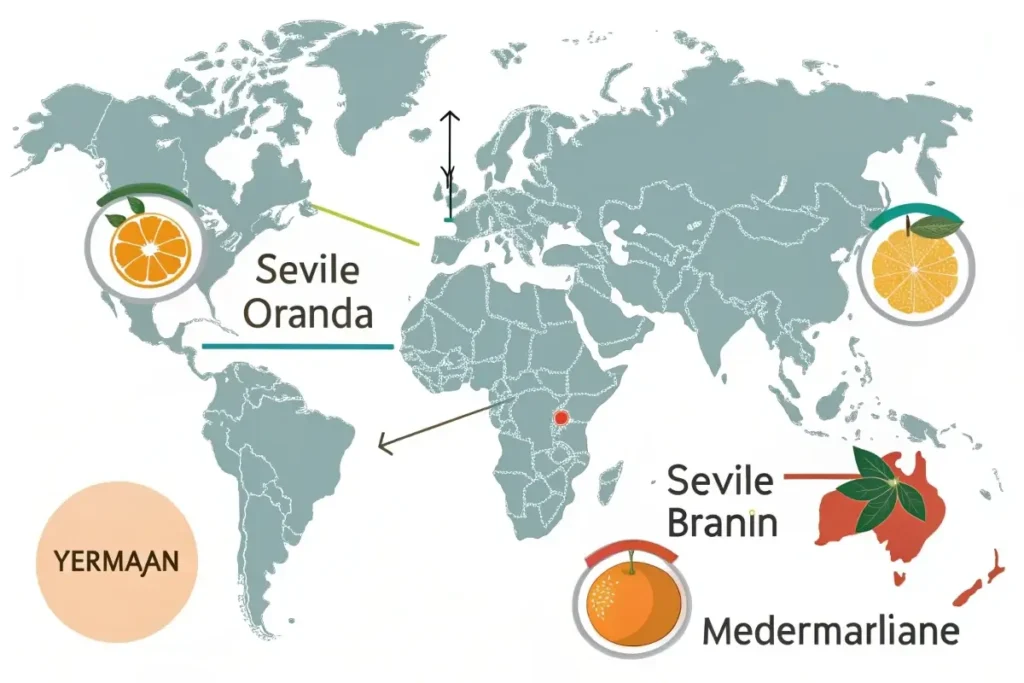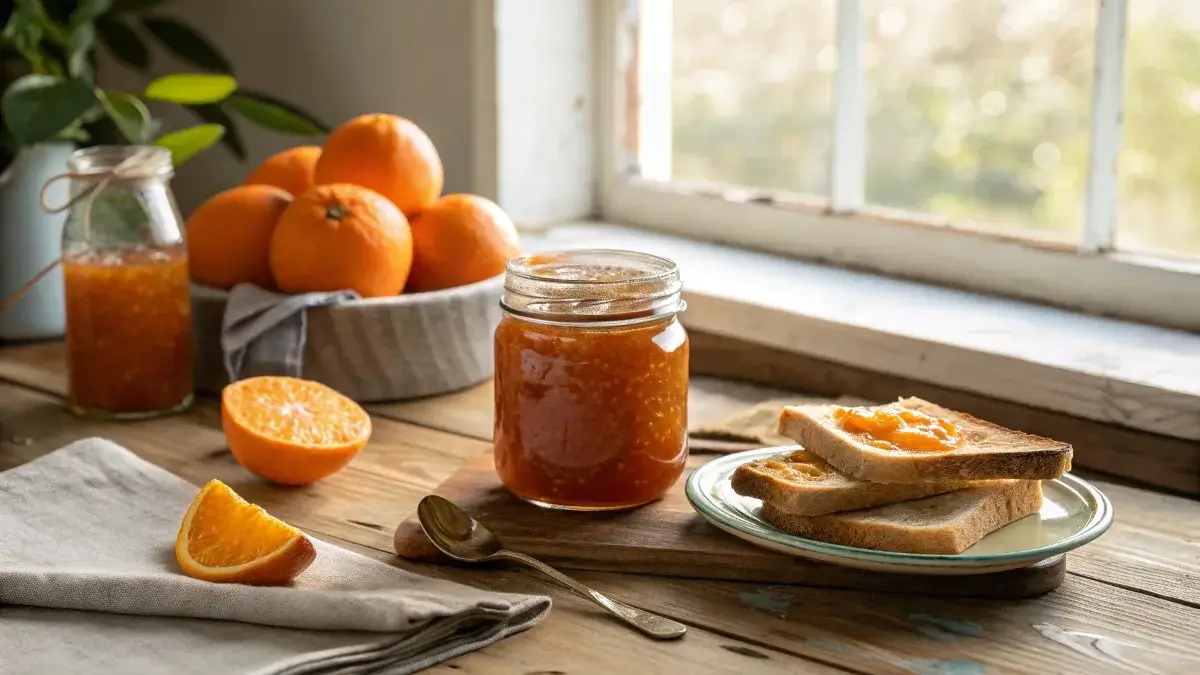Is Marmalade Sweet or Sour? Understanding Its Flavor
Marmalade, with its vibrant orange hue and bold flavor, is one of the most intriguing fruit spreads out there. But the question remains—is marmalade sweet or sour? The truth lies in its complex flavor profile, which balances sweetness, sourness, and a hint of bitterness. This article explores what makes marmalade taste the way it does, diving into its key ingredients, variations, and how to customize its flavor to suit your taste buds. Whether you prefer it sweet, tangy, or somewhere in between, marmalade offers something for everyone.
Introduction to Marmalade’s Taste
What is Marmalade?
Marmalade is a citrus-based preserve made by cooking citrus fruits, sugar, and water. Unlike other fruit spreads, marmalade stands out because it includes the peel of the fruit, which adds a distinct bitter note. Most commonly made with Seville oranges, marmalade can also feature other citrus fruits like lemons, grapefruits, or mandarins.
But marmalade isn’t just about citrus—it’s a blend of bold flavors. The sweetness of sugar, the tanginess of citrus juice, and the bitterness of the peel work together to create a spread that’s anything but ordinary. No wonder it’s been a breakfast staple for centuries!
The Popularity of Marmalade Around the World
From its origins in Portugal to its place on British breakfast tables, marmalade has captured hearts (and taste buds) worldwide. In Japan, yuzu marmalade offers a floral and tangy twist, while Mediterranean countries often favor sweeter versions made with mandarins or clementines.
So, is marmalade sweet or sour? The answer depends on where you are and how it’s made. What’s universal is its appeal—marmalade’s versatility has made it a beloved addition to both sweet and savory dishes.
The Key Ingredients That Shape Marmalade’s Flavor
Citrus Fruits: Sweet and Sour Elements in Marmalade
Citrus fruits are the heart and soul of marmalade. Their juice, pulp, and peel all contribute to its distinctive flavor profile. Oranges, especially Seville oranges, are the classic choice. Their juice provides a tangy, slightly sour base, while the peel adds bitterness. Some recipes also use lemons or grapefruits, which bring a sharper sourness to the mix.
But is marmalade sweet or sour? It’s both! The natural acidity of citrus fruits creates a sour foundation, while their sugars soften the tanginess. The specific type of fruit used can tilt the balance—mandarins and clementines, for example, lean sweeter, while grapefruits amplify the sour notes.
The Role of Sugar in Sweetening Marmalade
Sugar isn’t just an ingredient—it’s a flavor transformer. When citrus fruits are boiled with sugar, it offsets the sourness and enhances the fruit’s natural sweetness. The amount of sugar used can dramatically change the taste of marmalade, shifting it from tart to sweet.
Interestingly, sugar also helps marmalade achieve its thick, spreadable texture. As the mixture cooks, sugar interacts with the fruit’s natural pectin to form a gel. This means the sweetness isn’t just about flavor—it’s also about getting that perfect consistency.
Why the Peel Adds a Bitter Edge
The peel is what truly sets marmalade apart from other spreads. Rich in essential oils, the peel adds an aromatic bitterness that balances the sweet and sour elements. For some, this bitterness is what makes marmalade irresistible, while for others, it’s an acquired taste.
If you’ve ever wondered, “Is marmalade sweet or sour?”—now you know it’s the interplay of these ingredients, especially the peel, that makes it so unique.

Sweet vs. Sour: Exploring Marmalade’s Flavor Profile
What Makes Marmalade Sweet?
Sweetness in marmalade primarily comes from sugar and the natural sugars in citrus fruits. However, it’s not just about how much sugar you add—it’s also about the type of citrus used. Sweeter fruits like mandarins or Valencia oranges create a marmalade that’s milder and more dessert-like.
Some recipes even add honey or brown sugar for a deeper, richer sweetness. These variations are popular among those who prefer their marmalade to taste more like a traditional jam.
What Contributes to Its Sour Notes?
The sourness of marmalade comes directly from the citrus juice. Seville oranges, known for their tangy, slightly bitter taste, are the go-to choice for traditional marmalade. Lemons and grapefruits, often included in recipes, amplify the sourness even further.
Cooking can also affect sourness. The longer marmalade cooks, the more mellow the sour notes become, as the sugar caramelizes and blends with the acidity. But a quick cook might preserve a sharper tang.
The Balance of Flavors: Sweet, Sour, and Bitter
What makes marmalade truly special is its balance. Sweetness from sugar, sourness from citrus juice, and bitterness from the peel all come together to create a dynamic taste experience.
For those still asking, “Is marmalade sweet or sour?”—it’s not just one or the other. The best marmalades are a little bit of everything, offering a flavor that’s bold, bright, and unforgettable.
Dive deeper into marmalade’s unique characteristics by reading this comprehensive guide on marmalade’s flavor.
Types of Marmalade and Their Flavor Variations
Seville Orange Marmalade: The Bold and Bitter Favorite
Seville orange marmalade is the most iconic version, often celebrated for its bold and bitter flavor. These oranges are naturally sour, with thick peels that add a robust bitterness to the final product. The sugar in the recipe balances these strong flavors, creating the classic marmalade that’s beloved in Britain and beyond.
When considering “Is marmalade sweet or sour?”, Seville orange marmalade leans more towards sour, with bitterness taking center stage. It’s perfect for those who love intense flavors and a touch of tang in their morning spread.
Sweet Marmalade: Variations Using Clementines or Tangerines
For a sweeter twist, many opt for clementines or tangerines instead of Seville oranges. These fruits have a higher sugar content and a less bitter peel, resulting in a marmalade that’s more approachable for those with a sweet tooth.
Sweet marmalade is ideal for desserts or as a topping for scones and pastries. Its vibrant orange color and mild flavor make it a versatile choice for any occasion.
Yuzu Marmalade and Other Unique Citrus Blends
Yuzu marmalade, popular in Japan, brings a floral aroma and tangy taste that’s distinct from traditional orange marmalade. Grapefruit, lime, and even kumquat marmalades offer unique variations, each with its own balance of sweet and sour notes. These options show how marmalade can adapt to local tastes around the world.
For more delightful recipes, check out Kamala Recipes for inspiration!
The Science Behind Marmalade’s Sweet and Sour Taste
How Cooking Methods Affect the Flavor
The way marmalade is cooked plays a big role in its taste. Longer cooking times allow the sugar to caramelize, creating deeper, sweeter flavors. Shorter cooking times preserve the sourness of the citrus juice, resulting in a sharper, tangier spread.
The peel’s bitterness is also affected by cooking. Boiling the peel for a long time helps mellow its intensity, while quicker methods leave it more pronounced. These techniques give home cooks the ability to control whether their marmalade tastes sweet or sour.
The Role of Acidity and Natural Sugars in Marmalade
Citrus fruits are naturally acidic, and this acidity is key to marmalade’s sour notes. However, the sugar added during cooking doesn’t just sweeten the marmalade—it also balances the acidity.
Pectin, found naturally in citrus fruits, helps thicken marmalade while subtly enhancing its taste. The interplay between sugar, acid, and pectin creates the signature sweet-and-sour flavor that makes marmalade so distinct.

How to Customize Marmalade’s Taste at Home
Tips for Making Sweeter Marmalade
If you prefer your marmalade on the sweeter side, there are plenty of ways to adjust the recipe. First, choose sweeter citrus fruits like clementines, mandarins, or blood oranges. These fruits naturally have less acidity and bitterness, making the final product more mellow.
Another trick is to add more sugar during cooking. While the standard ratio is one part fruit to one part sugar, increasing the sugar slightly can create a richer sweetness without overpowering the citrus flavor. You could also incorporate sweeteners like honey or maple syrup for a deeper, more complex taste.
Adjusting Recipes for a More Tangy or Sour Flavor
For a sharper, tangier marmalade, stick with tart fruits like Seville oranges or grapefruits. You can also add a squeeze of fresh lemon juice to boost the acidity.
To preserve the citrus’s natural tang, cook the marmalade for a shorter time. This method helps retain the sourness of the juice while softening the bitterness of the peel.
Whether you want it sweet, tangy, or somewhere in between, customizing marmalade allows you to answer the question, “Is marmalade sweet or sour?” in your own way.
Frequently Asked Questions
Is Marmalade Sour or Sweet?
Marmalade is both sweet and sour, with a hint of bitterness. The sweetness comes from the added sugar, while the sourness is a result of the citrus fruits used, such as oranges or lemons. The balance between these flavors can vary based on the recipe or the type of citrus used.
What is the Taste of Marmalade?
Marmalade has a complex flavor profile that combines sweetness, tanginess, and bitterness. The citrus juice adds a bright, tart taste, while the sugar balances it with sweetness. The peel contributes a bitter note that makes marmalade unique compared to other fruit spreads.
What Flavor is Marmalade?
Marmalade has a citrus-forward flavor that’s a mix of sweet, sour, and bitter. The specific flavor depends on the fruit used: Seville oranges bring bold bitterness, while clementines or mandarins offer a sweeter profile. Yuzu or grapefruit variations add floral or tangy notes, giving marmalade a versatile and dynamic taste.
What is the Difference Between Jam and Marmalade?
The main difference between jam and marmalade lies in the ingredients and flavor. Jam is made from whole fruits and is usually sweet, while marmalade is made from citrus fruits and includes the peel, giving it a distinct bitter edge. Marmalade also has a more tangy and complex flavor than the straightforward sweetness of jam.
For more tips and creative recipes, check out Kamala Recipes!
Exploring Marmalade Around the World
British Marmalade Traditions and Beyond
In Britain, marmalade is a breakfast classic, especially the bold and bitter Seville orange variety. This traditional spread is enjoyed on toast with butter or used as an ingredient in puddings and cakes. British marmalade is often more bitter than sweet, making it a favorite among those who enjoy robust flavors.
However, marmalade’s influence doesn’t stop there. Countries worldwide have embraced and adapted it to suit local tastes. The question, “Is marmalade sweet or sour?”, is answered differently depending on where you are. In Scotland, for example, whisky-infused marmalade offers a boozy twist, blending sweetness and bitterness into a unique spread.
Unique Regional Variations and Flavors
Across the Mediterranean, marmalade often features sweeter fruits like mandarins or clementines, resulting in a milder and more sugary spread. These versions are perfect for desserts or as a topping for pastries.
In Japan, yuzu marmalade provides a floral and tangy alternative. The yuzu fruit combines sourness with a light, refreshing aroma, making it a popular choice for both sweet and savory dishes. In South America, tropical fruits like guava are used to create marmalade with a sweeter, exotic flavor profile.
These regional variations highlight marmalade’s adaptability. Whether you prefer it sweet, tangy, or bitter, there’s a version to match every palate. Wherever you are, marmalade continues to evolve, proving it’s more than just a spread—it’s a global phenomenon.


